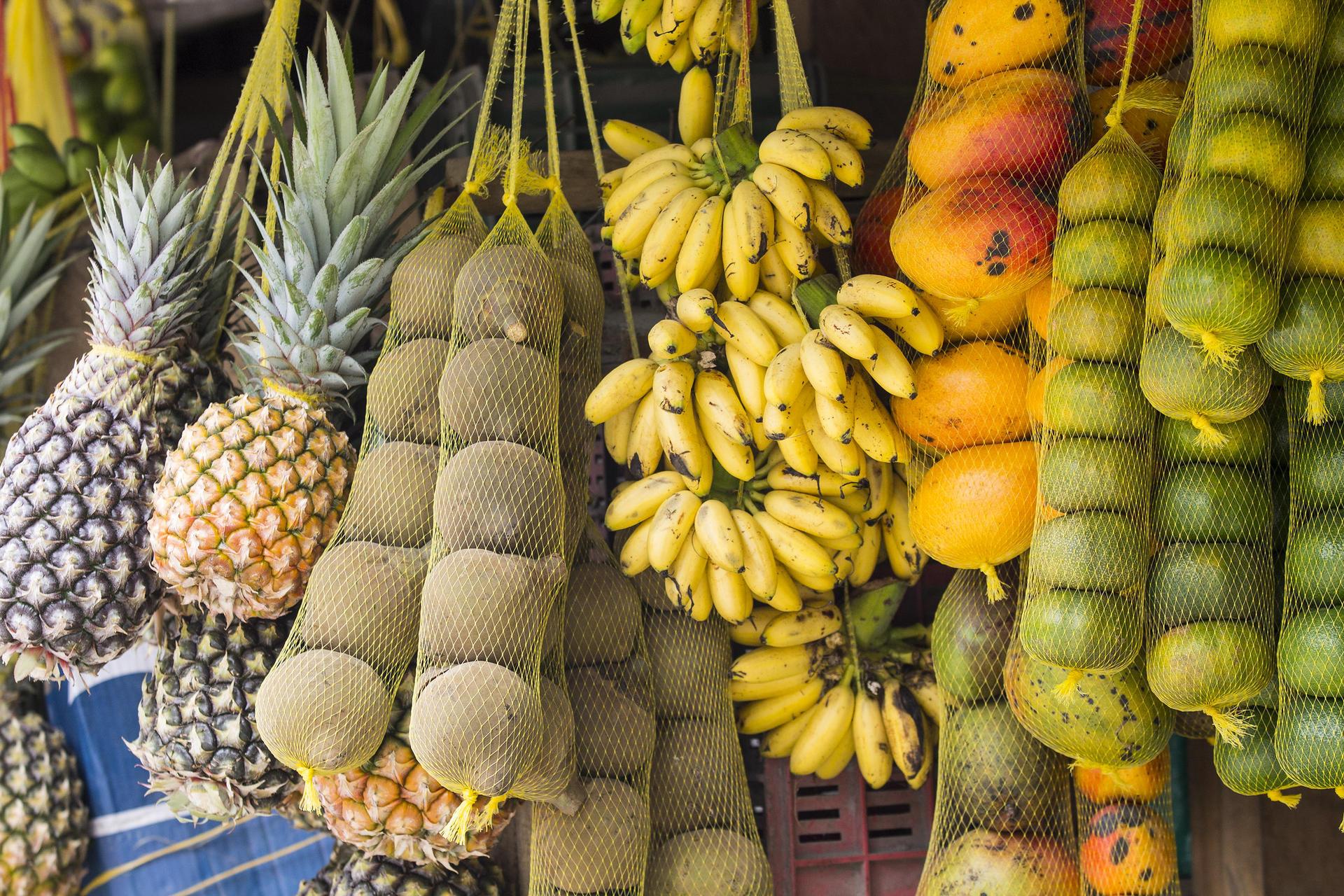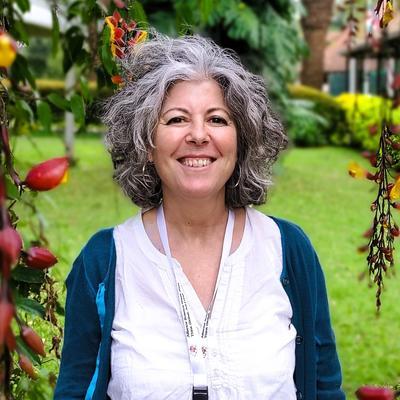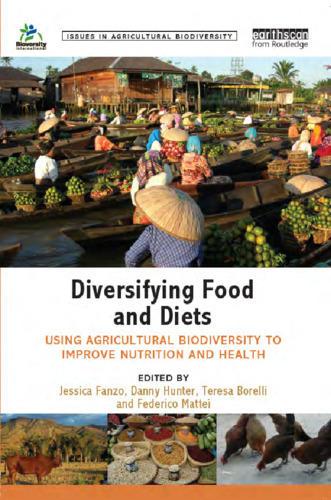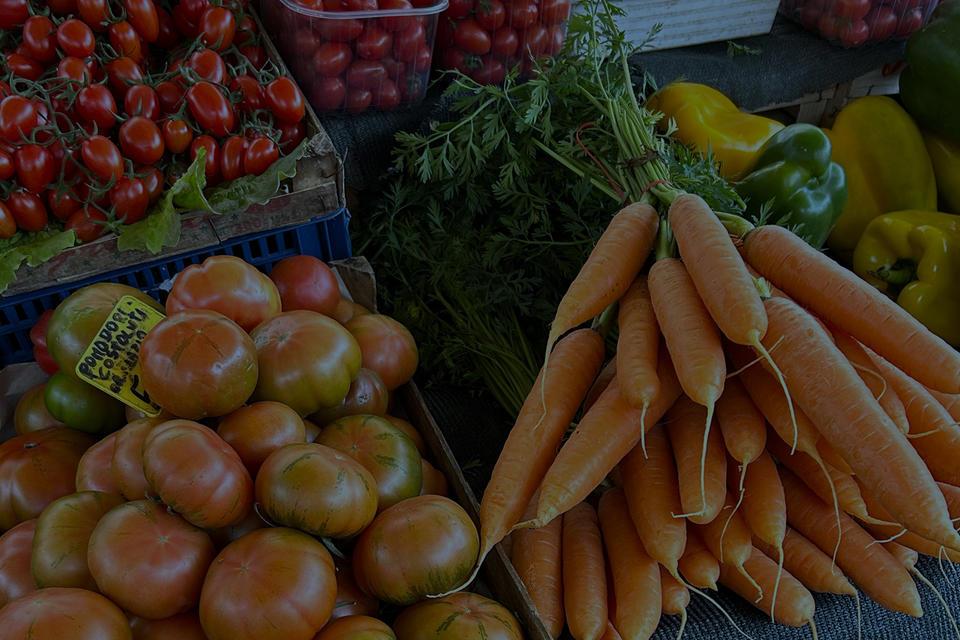Blog Biodiversity on our plate: the health and nutrition connection

On the path to COP16, the global summit on biodiversity hosted this year by Colombia: the first in the Alliance's series of COP16 thought pieces focuses why conservation and sustainable use of biodiversity is good for human health.
A diverse diet is a healthy diet. Research has shown that increasing the number of species and varieties we grow and consume can deliver a full range of nutrients and benefits to nourish human health.
This is particularly urgent because our food systems fail to provide the nourishment we need. Food diversity in production and consumption has reached an all-time low, due to several compounding crises: climate change, land degradation, and the prioritization of mass production of cheap, low-quality food. In 2022, 3 in 10 people globally – some 2.4 billion people – were moderately to severely food insecure while more than 4 people in 10, over 3.1 billion people, were unable to afford a safe, nutritious diet particularly vulnerable groups, such as indigenous peoples. As proof of our low diverse global diet, we now obtain over 50% of our plant-based calories from only three crops: rice, wheat and maize.
It doesn’t have to be this way. Agrobiodiversity - the wealth of different plants, animals, and micro-organisms that make up our agri-food systems – can provide a bountiful menu of different foods, species and genetic diversity to transform food production systems. If policymakers, industry and development organizations incentivize the integration of agrobiodiversity, we can improve livelihoods, reduce health risks, and make what we eat more sustainable, equitable, and resilient.
What does food diversity offer?

Maximizing biodiversity’s benefits demands understanding its fundamental contribution to food provision and health, including nutritional composition. The nutrient content between different species, or different breeds and plant varieties can vary greatly, as can their cost and availability throughout the seasons. Nutrient availability also differs depending on the part of the plant or animal eaten, and how it is prepared and cooked.
Our current knowledge only scratches the surface of food’s complexity. Recent innovations in biomolecular analysis have peered into the “dark matter” of food, scouring the 2,600 macronutrients, micronutrients, and other components that can impact our health. Beginning with 1,650 foods, the Periodic Table of Food Initiative is compiling data to spark innovation in crop breeding, dietary recommendations, and incentives for adopting more diverse diets at scale.
The lessons of traditional food
Food and culture are closely entwined. For centuries, agrobiodiversity has been part of cuisines around the world. A study conducted in Turkey (Türkiye) reported that wild food plants are still widely used in local and traditional cooking in many parts of the country. Some are eaten raw, while others are cooked, requiring more complex processing and preparation. The study also found 29 species are used in traditional herbal medicine for curing almost 40 ailments, including diabetes, indigestion, common colds, kidney stones, coughs, cardio-vascular problems, and toothaches. We have evidence that indigenous food systems and the diverse foods and diets that compose them strengthen connections to land, environment, livelihoods, resilience, and well-being.
The future: school meals as an entry point
Connecting tradition and innovation does not have to be complicated. There are many simple ways to integrate biodiversity into diets in ways that are culturally sensitive and informed by research.
One exemplary opportunity is school meals. A recent estimate is that 418 million children benefit from school meals. Evidence shows school meals improve nutrition for school children but there is room for improvement that could be filled by increased agrobiodiversity in meals. Not only can school meals provide essential nutrition to schoolchildren, but they can also be an educational resource. School meal programs also employ over 4 million people.
Public procurement that sources local produce from small-scale farmers, known as home-grown school feeding (HGSF), can solve multiple problems at once. A 2022 assessment of HGSF programs in 12 countries in Latin America and the Caribbean found evidence of healthier eating habits, improved dietary diversity, and enhanced school enrolment, increasing students’ productive potential later in life.
HGSF approaches can also incentivize biodiversity cultivation through shortened supply chains. In Busia County, Kenya, the HGSF approach was piloted to diversify diets with locally sourced indigenous vegetables. This initiative has demonstrated significant potential in promoting social protection. Preliminary evidence indicates that this approach positively influenced dietary diversity in school meals, encouraged the cultivation of neglected and underutilized species, and improved economic and social outcomes for producers.
Since the pandemic, this space is gaining recognition: the Alliance joined over 120 partners as part of the School Meal Coalition hosted by the World Food Program, which aims to improve cross-country implementation of school meal programs with an emphasis on reaching vulnerable children.

Kindergarten teachers and children in Cauca, Colombia collaboratively grow vegetables, learning about the effects of weather on plant growth and the significance of soil care.
Adopting a climate change-responsive approach to school feeding offers valuable opportunities to integrate broader educational themes, particularly through school garden-based learning. Gardens can offer hands-on learning, helping children grasp the risks and impacts of climate change and showcasing adaptation strategies. This has been effectively demonstrated in the Philippines, where schools have widely promoted regenerative gardening systems with climate-resilient practices. Similarly, in Cauca, Colombia, kindergarten teachers and children collaboratively grow vegetables, learning about the effects of weather on plant growth and the significance of soil care as part of climate-smart agriculture.
Restoring agrobiodiversity and enhancing human health
Biodiversity loss is a largely overlooked consequence of global food system transformations, critically disrupting ecosystems, and eroding the cultural heritage of traditional and indigenous peoples. The decline of indigenous food cultures and agrobiodiversity are interlinked, as reduced awareness, production, and consumption of traditional foods contribute to this cycle. Revitalizing these food cultures and increasing the use of underutilized indigenous foods can restore agrobiodiversity, in line with Target 10 of the Kunming-Montreal Global Biodiversity Framework of the Convention on Biological Diversity, which will be among priority discussions at COP16. This approach not only enhances human nutrition and health through their beneficial properties but also promotes sustainable food production systems.
The Team

Danny Hunter
Principal Scientist, Convener for the Pacific
Teresa Borelli
Associate ScientistFurther reading








